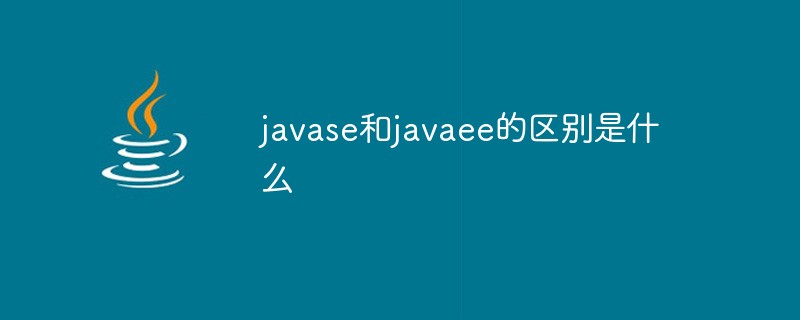What is the difference between javase and javaee
Difference: JavaSE refers to the Java Platform Standard Edition, which is used to develop and deploy Java applications on desktops, servers, and embedded devices and real-time environments. JavaEE refers to Java Platform Enterprise Edition, used for developing and deploying portable, robust, scalable and secure server-side Java applications.

The operating environment of this tutorial: windows7 system, java8 version, DELL G3 computer.
Java SE:
Java SE is the abbreviation of Java Platform, Standard Edition (also known as Java 2 Platform), used for development and Deploy Java applications on desktops, servers, and embedded devices and real-time environments. Java SE includes class libraries for developing Java Web services and provides the foundation for Java EE.
Java SE (Java Platform, Standard Edition, Java Standard Edition) is based on JDK and JRE.
Java EE:
Java EE, Java Platform Enterprise Edition (Java Platform Enterprise Edition), is a standard platform launched by Sun for enterprise-level applications and is used to develop B/S architecture software. It is mostly used for enterprise-level development, including web development and so on. Also called J2EE.
Enterprise Edition helps develop and deploy server-side Java applications that are portable, robust, scalable, and secure. Java EE is built on the basis of Java SE. It provides Web services, component models, management and communication APIs, and can be used to implement enterprise-class service-oriented architecture (SOA) and Web 2.0 applications.
Java EE is an architecture that leverages the Java2 platform to simplify complex issues related to the development, deployment, and management of enterprise solutions. The foundation of J2EE technology is the core Java platform or Java SE. Java EE not only consolidates many advantages of the standard version, such as the "write once, run anywhere" feature, the JDBC API for convenient database access, CORBA technology, and the ability to apply on the Internet security mode to protect data, etc., and also provides comprehensive support for EJB (EnterpriseJavaBeans), Java Servlets API, JSP (Java Server Pages) and XML technology. The ultimate goal is to become an architecture that enables enterprise developers to significantly reduce time to market.
The Java EE architecture provides a middle-tier integration framework to meet the needs of applications that require high availability, high reliability, and scalability without too much cost. By providing a unified development platform, J2EE reduces the cost and complexity of developing multi-tier applications, and at the same time provides strong support for the integration of existing applications, fully supports EJB, has good wizards to support packaging and deployment of applications, and adds directory support. Enhanced security mechanisms and improved performance.
Recommended related video tutorials: Java video tutorial
The above is the detailed content of What is the difference between javase and javaee. For more information, please follow other related articles on the PHP Chinese website!

Hot AI Tools

Undresser.AI Undress
AI-powered app for creating realistic nude photos

AI Clothes Remover
Online AI tool for removing clothes from photos.

Undress AI Tool
Undress images for free

Clothoff.io
AI clothes remover

Video Face Swap
Swap faces in any video effortlessly with our completely free AI face swap tool!

Hot Article

Hot Tools

Notepad++7.3.1
Easy-to-use and free code editor

SublimeText3 Chinese version
Chinese version, very easy to use

Zend Studio 13.0.1
Powerful PHP integrated development environment

Dreamweaver CS6
Visual web development tools

SublimeText3 Mac version
God-level code editing software (SublimeText3)





